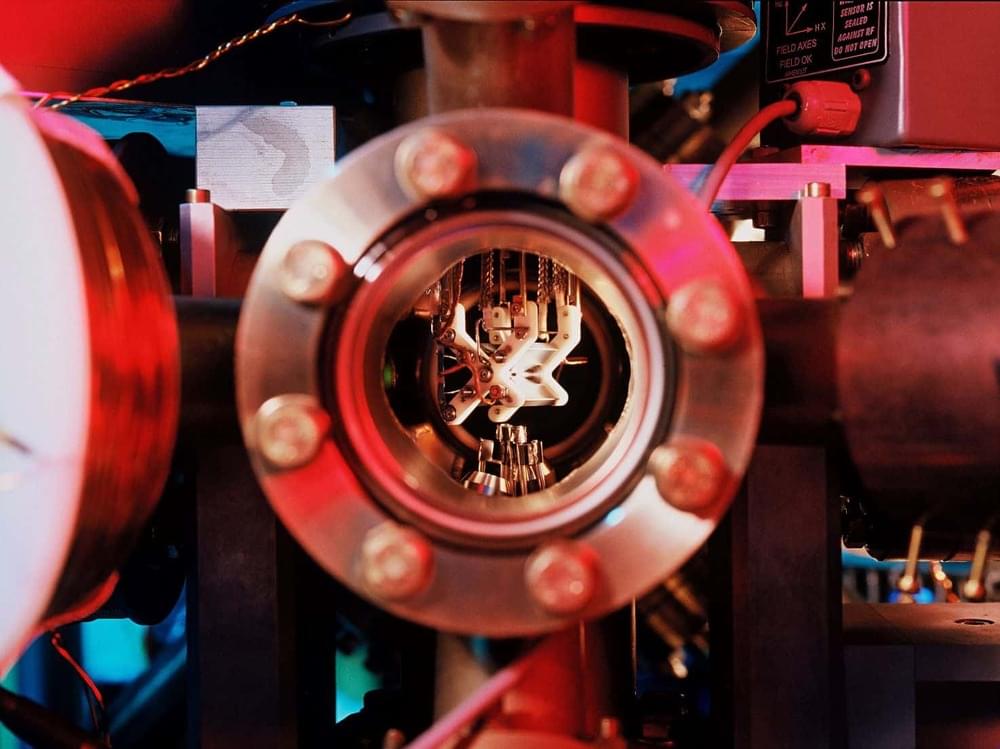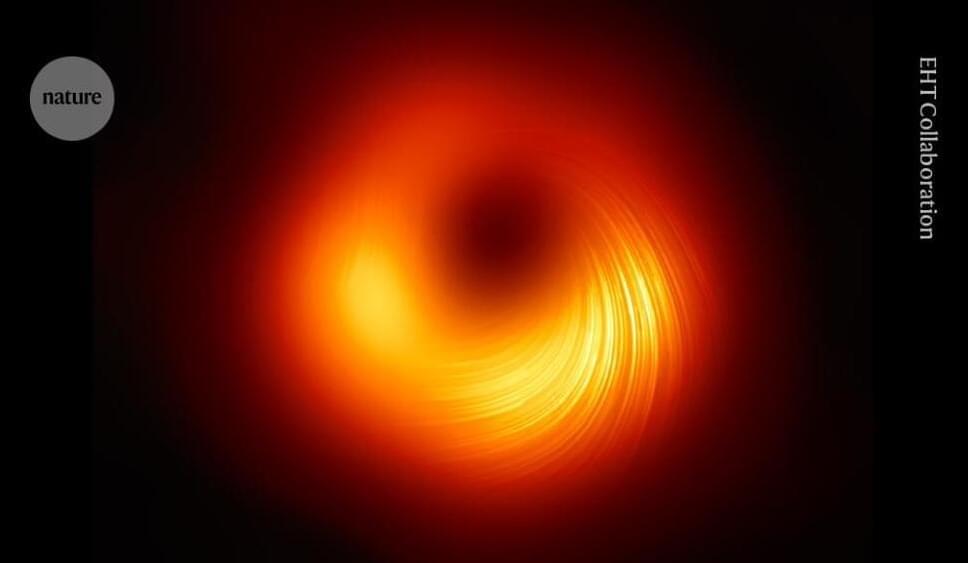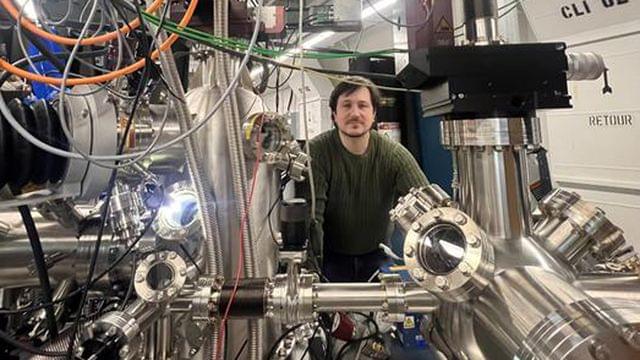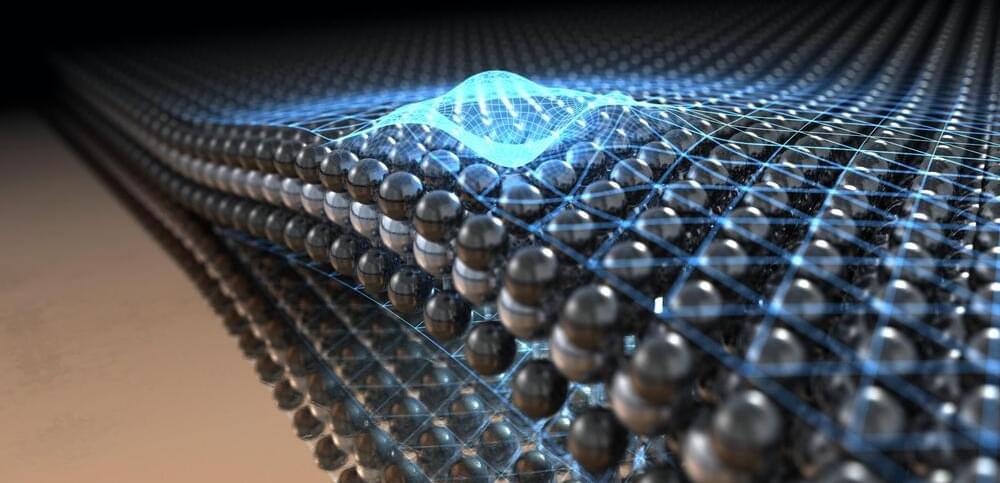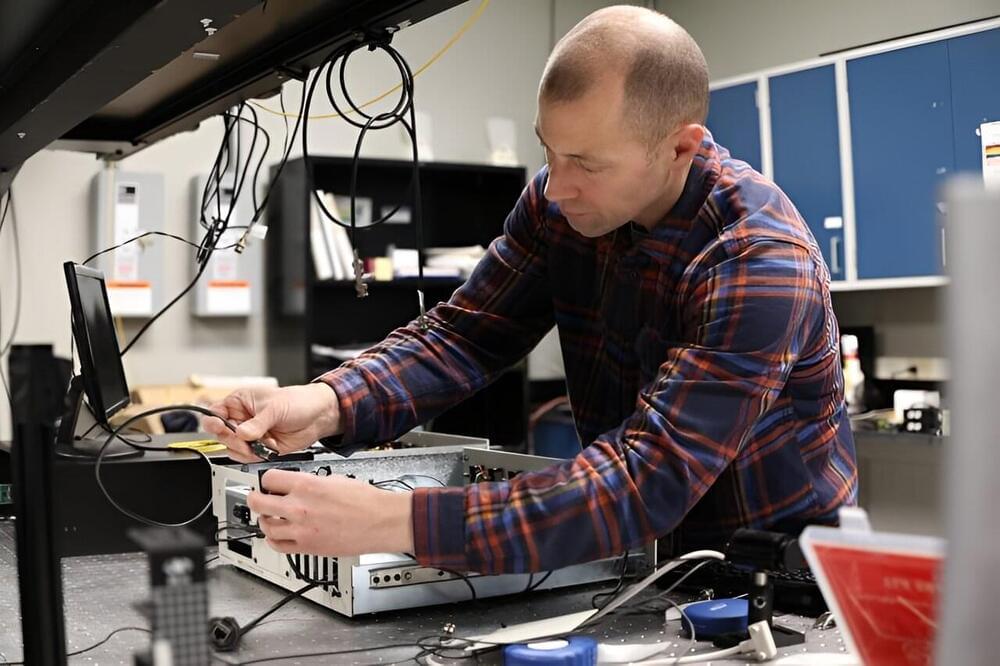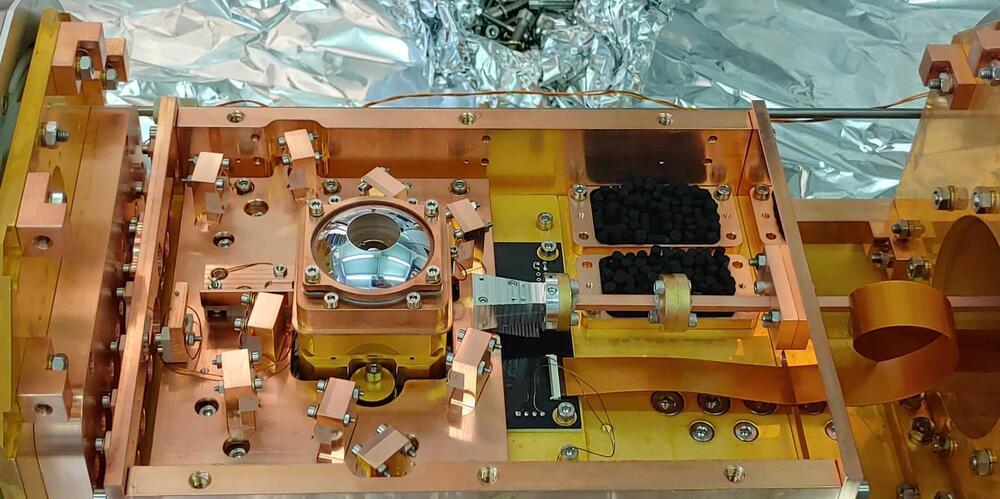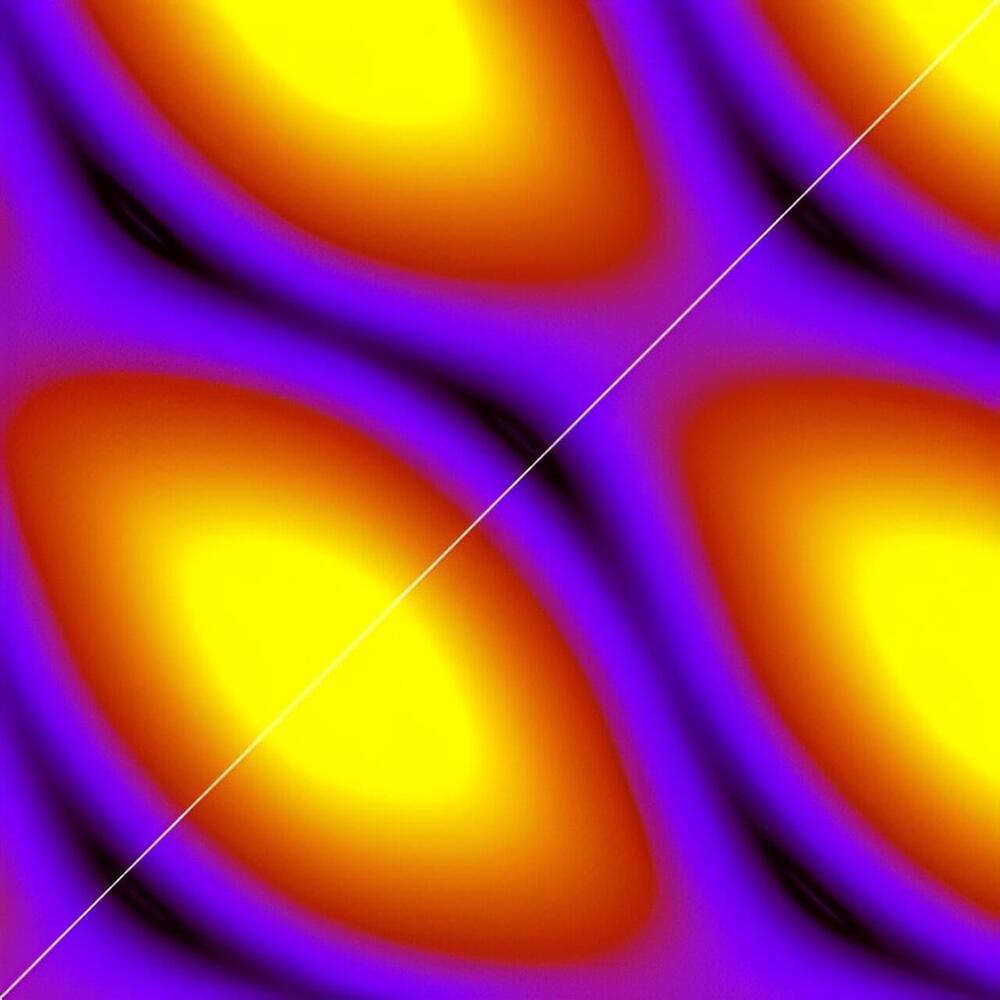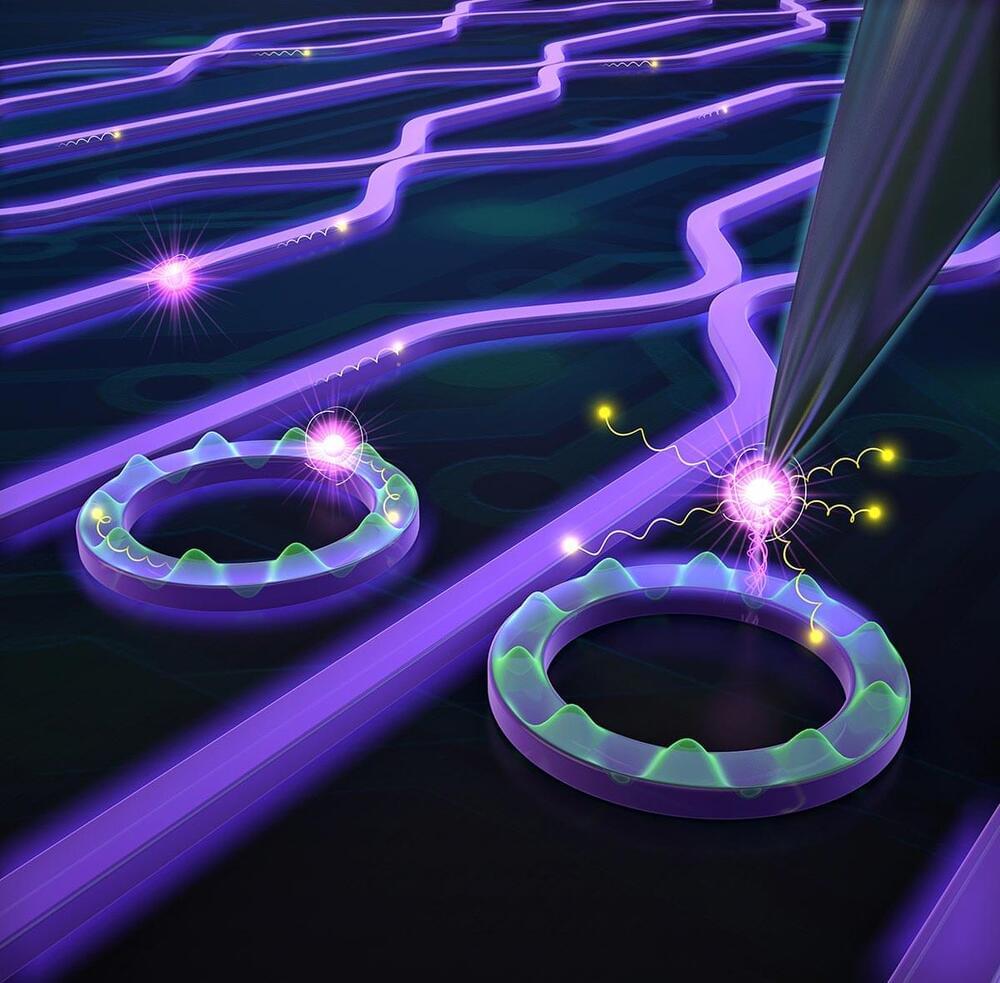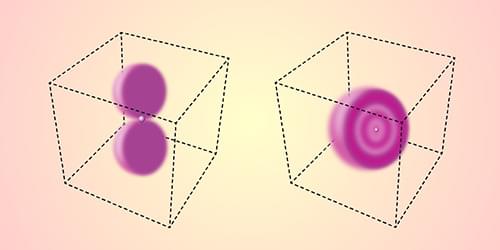Archive for the ‘quantum physics’ category: Page 95
Mar 15, 2024
Do black holes explode? The 50-year-old puzzle that challenges quantum physics
Posted by Shubham Ghosh Roy in categories: cosmology, particle physics, quantum physics
In hindsight, it seems prophetic that the title of a Nature paper published on 1 March 1974 ended with a question mark: “Black hole explosions?” Stephen Hawking’s landmark idea about what is now known as Hawking radiation1 has just turned 50. The more physicists have tried to test his theory over the past half-century, the more questions have been raised — with profound consequences for how we view the workings of reality.
In essence, what Hawking, who died six years ago today, found is that black holes should not be truly black, because they constantly radiate a tiny amount of heat. That conclusion came from basic principles of quantum physics, which imply that even empty space is a far-from-uneventful place. Instead, space is filled with roiling quantum fields in which pairs of ‘virtual’ particles incessantly pop out of nowhere and, under normal conditions, annihilate each other almost instantaneously.
However, at an event horizon, the spherical surface that defines the boundary of a black hole, something different happens. An event horizon represents a gravitational point of no return that can be crossed only inward, and Hawking realized that there two virtual particles can become separated. One of them falls into the black hole, while the other radiates away, carrying some of the energy with it. As a result, the black hole loses a tiny bit of mass and shrinks — and shines.
Mar 14, 2024
Powerful Spectroscopy Tool Ushers In New Era of Quantum Materials Research
Posted by Shailesh Prasad in categories: materials, quantum physics
A technique called time-and angle-resolved photoemission spectroscopy (TR-ARPES) has emerged as a powerful tool, allowing researchers to explore the equilibrium and dynamical properties of quantum materials via light-matter interaction.
Mar 14, 2024
Quantum dance to the beat of a drum: Researchers observe how energy of single electron is tuned by surrounding atoms
Posted by Shubham Ghosh Roy in categories: computing, particle physics, quantum physics
Physicists at the University of Regensburg have choreographed the shift of a quantized electronic energy level with atomic oscillations faster than a trillionth of a second.
Throwing a ball into the air, one can transfer arbitrary energy to the ball such that it flies higher or lower. One of the oddities of quantum physics is that particles, e.g., electrons, can often only take on quantized energy values—as if the ball was leaping between specific heights, like steps of a ladder, rather than flying continuously.
Qubits and quantum computers as well as light-emitting quantum dots (Nobel Prize 2023) make use of this principle. However, electronic energy levels can be shifted by collisions with other electrons or atoms. Processes in the quantum world usually take place on atomic scales and are also incredibly fast.
Mar 13, 2024
Researchers achieve quantum key distribution for cybersecurity in novel experiment
Posted by Saúl Morales Rodriguéz in categories: cybercrime/malcode, quantum physics
Researchers at the Department of Energy’s Oak Ridge National Laboratory have demonstrated that advanced quantum-based cybersecurity can be realized in a deployed fiber link.
Mar 13, 2024
A new ion trap for larger quantum computers
Posted by Saúl Morales Rodriguéz in categories: computing, quantum physics
Researchers at ETH have managed to trap ions using static electric and magnetic fields and to perform quantum operations on them. In the future, such traps could be used to realize quantum computers with far more quantum bits than have been possible up to now.
Mar 13, 2024
Quantum-mechanical ‘molecules’ spotted in superconducting devices
Posted by Zola Balazs Bekasi in categories: computing, quantum physics
Electronic states that resemble molecules and are promising for use in future quantum computers have been created in superconducting circuits by physicists at RIKEN.
Mar 12, 2024
Solid-State Qubits: Artificial Atoms Unlock Quantum Computing Breakthrough
Posted by Paul Battista in categories: computing, particle physics, quantum physics
JILA breakthrough in integrating artificial atoms with photonic circuits advances quantum computing efficiency and scalability.
In quantum information science, many particles can act as “bits,” from individual atoms to photons. At JILA, researchers utilize these bits as “qubits,” storing and processing quantum 1s or 0s through a unique system.
While many JILA Fellows focus on qubits found in nature, such as atoms and ions, JILA Associate Fellow and University of Colorado Boulder Assistant Professor of Physics Shuo Sun is taking a different approach by using “artificial atoms,” or semiconducting nanocrystals with unique electronic properties. By exploiting the atomic dynamics inside fabricated diamond crystals, physicists like Sun can produce a new type of qubit, known as a “solid-state qubit,” or an artificial atom.
Mar 12, 2024
Researchers explore quantum computing’s ability to speed solutions for financial sector
Posted by Cecile G. Tamura in categories: biotech/medical, chemistry, computing, finance, mathematics, quantum physics
The work, facilitated by the Chicago Quantum Exchange (CQE) and led by a team that includes UD, Argonne, JPMorgan Chase and University of Chicago scientists, lays groundwork for future applications—and highlights the need for cross-sector collaboration.
The third category, stochastic modeling, is used across the sciences to predict the spread of disease, the evolution of a chemical reaction, or weather patterns. The mathematical technique models complex processes by making random changes to a variable and observing how the process responds to the changes.
The method is used in finance, for instance, to describe the evolution of stock prices and interest rates. With the power of quantum computing behind it, stochastic modeling can provide faster and more accurate predictions about the market.
Mar 12, 2024
Precise Measurement of Hydrogen’s Energy Levels
Posted by Saúl Morales Rodriguéz in categories: particle physics, quantum physics
Physicists used to think they had a good idea of the size of the proton. Values derived from measurements of hydrogen’s emission spectrum and from electron-scattering experiments agreed with a proton radius of around 0.88 femtometers (fm). Then, in 2010, confidence was shaken by a spectral measurement that indicated a proton radius of approximately 0.84 fm [1]. In the years since, this “proton radius puzzle” has become even more of a head-scratcher, with some experiments supporting the original estimate and others finding an even greater discrepancy. Simon Scheidegger and Frédéric Merkt at the Swiss Federal Institute of Technology (ETH), Zurich, have now made precise new measurements of the transition energies between one of hydrogen’s metastable low-energy states and several of its highly excited states [2] (Fig. 1). These measurements allow the researchers to derive some of the atom’s properties, such as its ionization energy, with greater confidence, which should help clear up some of the confusion.
The 2010 study that “shrank the proton” (as the title of the editorial summary in Nature jokingly stated) concerned the 2 S –2 P1/2 Lamb shift [1]. According to Dirac’s predictions, the 2 S and 2 P1/2 levels of atomic hydrogen should be degenerate. The Lamb shift refers to the lifting of this degeneracy by quantum electrodynamic (QED) effects, the largest contribution being the electron “self-energy” due to interactions with virtual photons. Once this and other QED effects are accounted for, a tiny shift of the bound-state energy levels remains, which can be attributed to the proton’s finite size. By measuring this residual energy shift, one can determine the proton radius directly. The authors of the 2010 study did so using hydrogen atoms in which the electron was replaced by its heavier cousin, the muon, since the finite-size effect is stronger in this system.
Ever since that surprise result, researchers have tried to pin down the proton radius both directly, via the finite-size effect, and indirectly, via the Rydberg constant. The Rydberg constant relates an atom’s energy levels to other physical constants and is one of the key inputs used in calculations of the proton radius. Determining its value requires painstaking measurements of the transition energies between hydrogen’s various states. Several groups have made monumental efforts in this regard, but the values they derive for the proton radius have been all over the place. A 2018 measurement of the 1 S –3 S transition by a group in France gave a value of about 0.88 fm [3], a 2019 measurement of the classic Lamb shift (this time in regular hydrogen) by a group in Canada came up with a value of about 0.833 fm [4], and a 2017 measurement of the 2 S –4 P transition by a group in Germany suggested a similarly low value of about 0.834 fm [5]. In 2020, the group in Germany arrived at a slightly higher value of 0.848 fm [6]. In 2022, finally, from measurements of the 2 S –8 D transition, a group at Colorado State University proposed a “compromise value” of about 0.86 fm [7].
